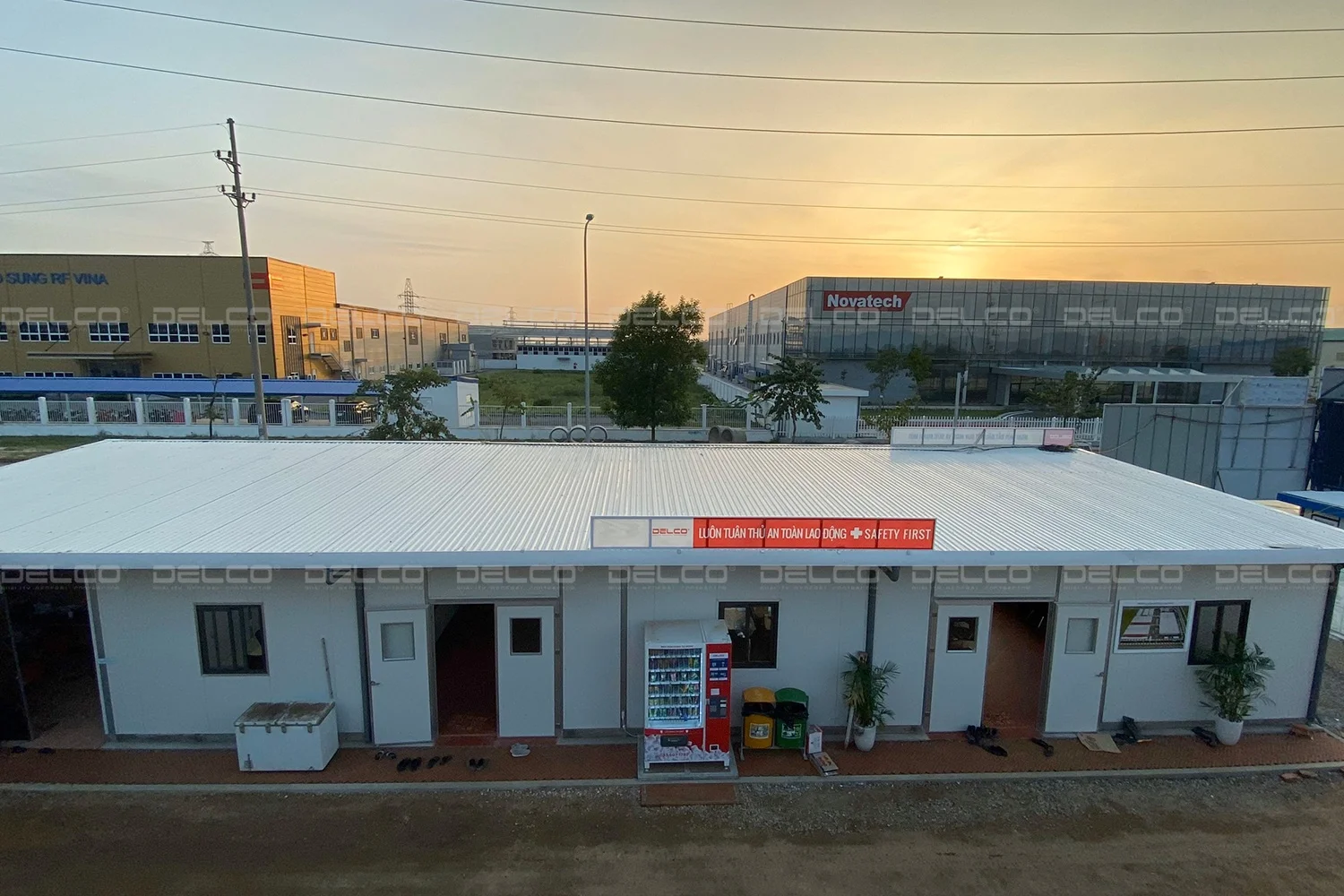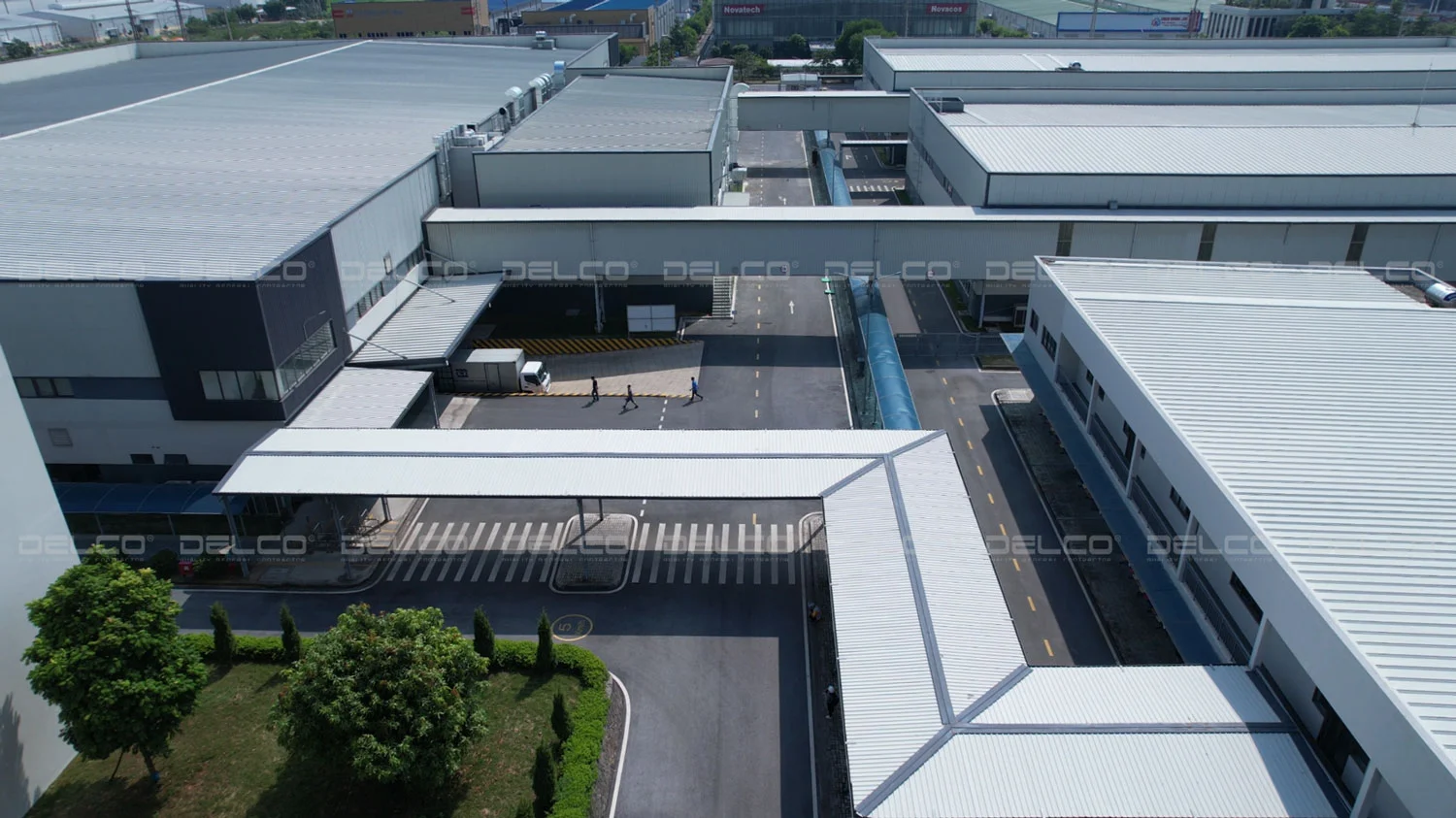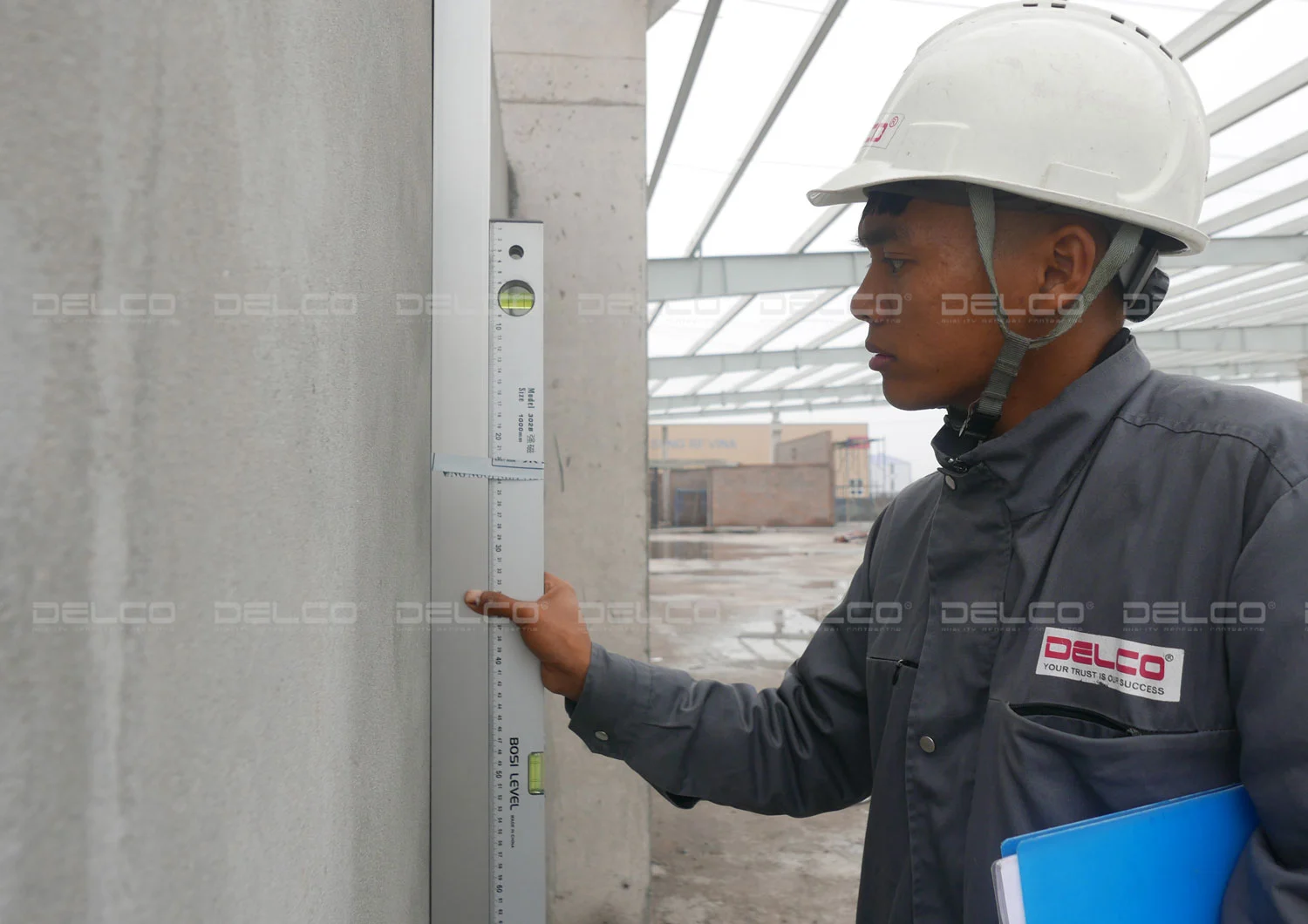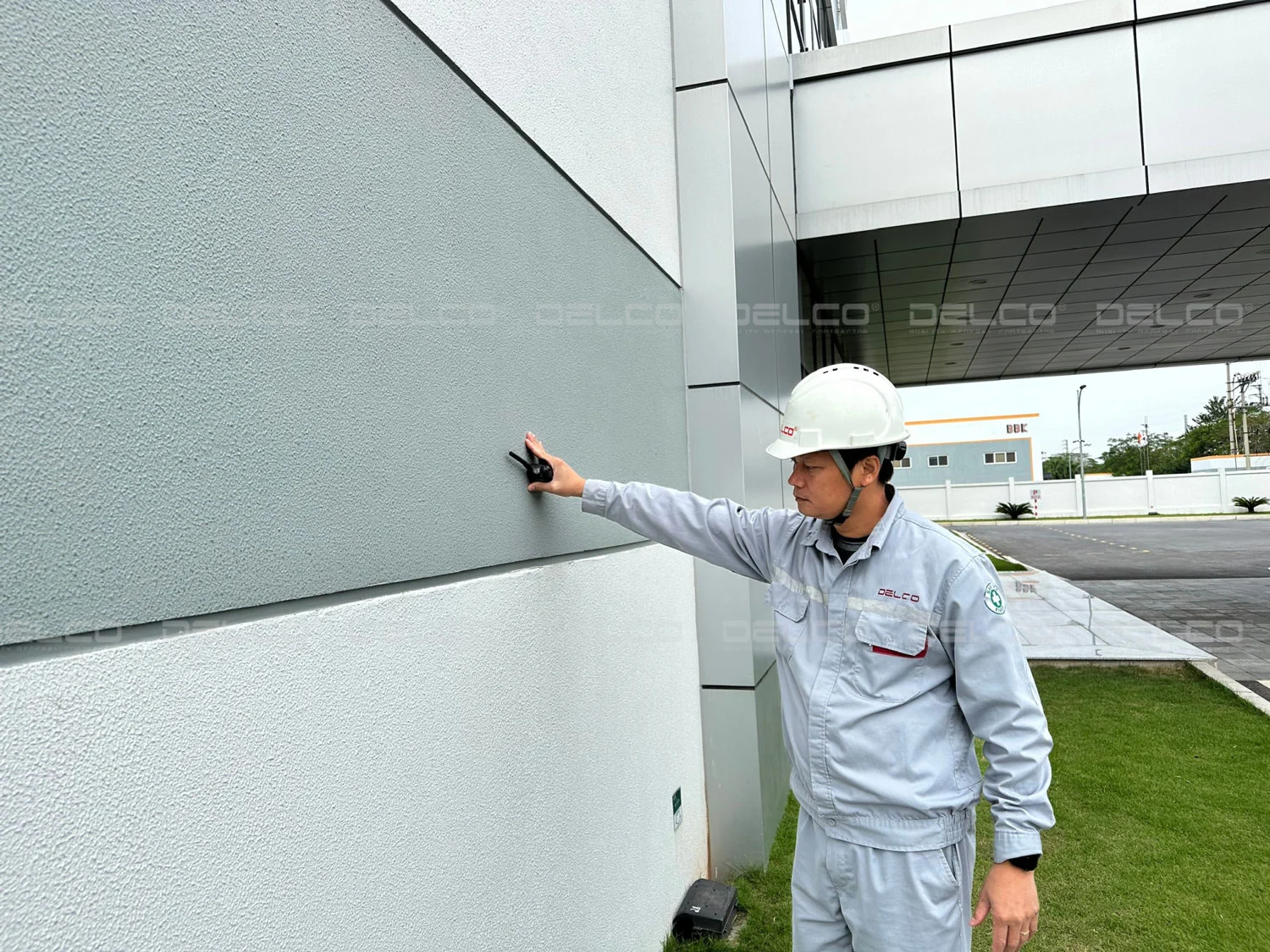In the construction of large-scale projects such as factories or commercial buildings, temporary structures play a crucial role in ensuring smooth and safe operations. These are short-term installations to support management works, material storage, record-keeping, and security throughout the construction process.
What are temporary structures? Permit procedures for temporary construction
Temporary structures are auxiliary facilities used during construction, including the project management office, storage areas, gates, security fences, as well as systems for electricity, water, and surveillance cameras. For large-scale projects such as factory construction, these temporary structures are typically used for 3 to 12 months. They are vital for ensuring site security, safeguarding stored materials, and managing project timelines, contributing to a safe and efficient construction process.

Is a permit required for factory temporary structures?
According to Article 131 of the 2014 Construction Law of Vietnam, temporary structures supporting the primary construction, such as workers’ accommodations, temporary storage, and temporary offices, exist only for a limited duration and do not require the contractor to obtain planning design approvals or construction permits. This regulatory framework simplifies the preparation phase, saving time and costs.
The importance of temporary structures
Effectively managing the construction process
The project management office is one of the key components of temporary structures, serving as the workplace for engineers and construction site managers. It is where project schedules are planned, tasks are coordinated, and daily operations are monitored. Hence, the office must be organized and well-equipped to create an optimal working environment for the on-site team. Effective and systematic management at the project office ensures construction progresses on schedule and meets quality standards.

Inside the site office of DELCO
Ensuring Site Security and Asset Safety
Site gates, security houses, and fences are essential components for protecting assets and equipment on-site. These facilities must be securely constructed and strategically positioned to minimize risks such as theft, unauthorized access, and other security incidents. Maintaining site security not only safeguards property but also ensures a safe and orderly working environment for workers and engineers.

Images of DELCO site
Protecting Worker Safety and Health
Electrical and water systems used during construction must be designed and installed to meet safety standards and adequately support project demands. Issues such as electrical faults or water drainage problems can significantly impact workplace safety and project timelines.
Additionally, worker sanitation facilities must be appropriately located, hygienic, and regularly cleaned to reduce risks of cross-contamination and prevent disease outbreaks on-site.
Enhancing Construction Safety
During site layout planning and execution, contractors must carefully allocate areas for fire safety, water supply points, designated safety zones, and smoking areas for workers. These considerations help prevent fire hazards and ensure safety throughout the construction process, facilitating smooth project implementation.
See also: 4 mandatory regulations applied when building factories in Vietnam
See also: Managing and Controlling Quality and Progress in Factory Construction






